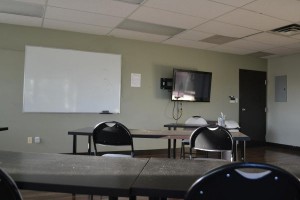
Primary survey: danger
Before attempting to deliver safe and prompt emergency aid, first ensure that no danger can come to the first aider. It will make things more difficult to have to treat more casualties.
- Check the immediate surroundings.
- Move and hazardous objects or any possible source of danger away from the victim to allow the rescuer to deliver first aid, eliminating any risks for supplemental injury.
- As a last resort, move the victim if absolutely necessary, such as in burning areas or in the wilderness. Emergency services are in the best position to move a victim.
Primary survey: response
After ensuring that there is no danger in the environment, check for responsiveness of the casualty to see if the victim is conscious.
- Shout a command such as “open your eyes”
- Tap them on the shoulders and ask “are you ok?”
- If no response was obtained, attract bystanders by calling for help.
- Call for emergency medical services.
Primary survey: circulation
It is important to immediately check for pulse as cells begin to die within four to six minutes without oxygen. Timing is critical for pulseless emergencies.
- Check the pulse by placing two fingers in the groove of the neck for 10 seconds. The radial pulse may also be checked.
- If there is no pulse, give two rescue breaths and 30 chest compressions. Repeat this cycle until paramedics arrive or until victim is resuscitated.
Primary survey: airway
The victim will not be able to breathe if the airway is blocked. One common body organ that blocks the airway is the tongue. It is, however, easy to keep the airway open.
- Kneel by the victim’s head.
- Place the first hand on the victim’s forehead. Place the index and middle fingertips of the second hand on the chin.
- Gently tilt the head back. Lift and hold to keep the airway open.
Primary survey: breathing
Once the victim’s airway is opened, it is necessary to check for breathing to complete the primary survey.
- Still knelt beside the victim, place own cheek above the victim’s nose and mouth. Feel for air on the cheek. Watch for rise and fall of chest. Do this for no more than ten seconds.
- If necessary, give rescue breaths.
The methods listed above do not substitute for first aid training.
workplace approved programs offer first aid and CPR courses that may prove to be valuable in times of emergency situations. It is in these courses that primary survey and secondary survey can be taught in details with actual training.
